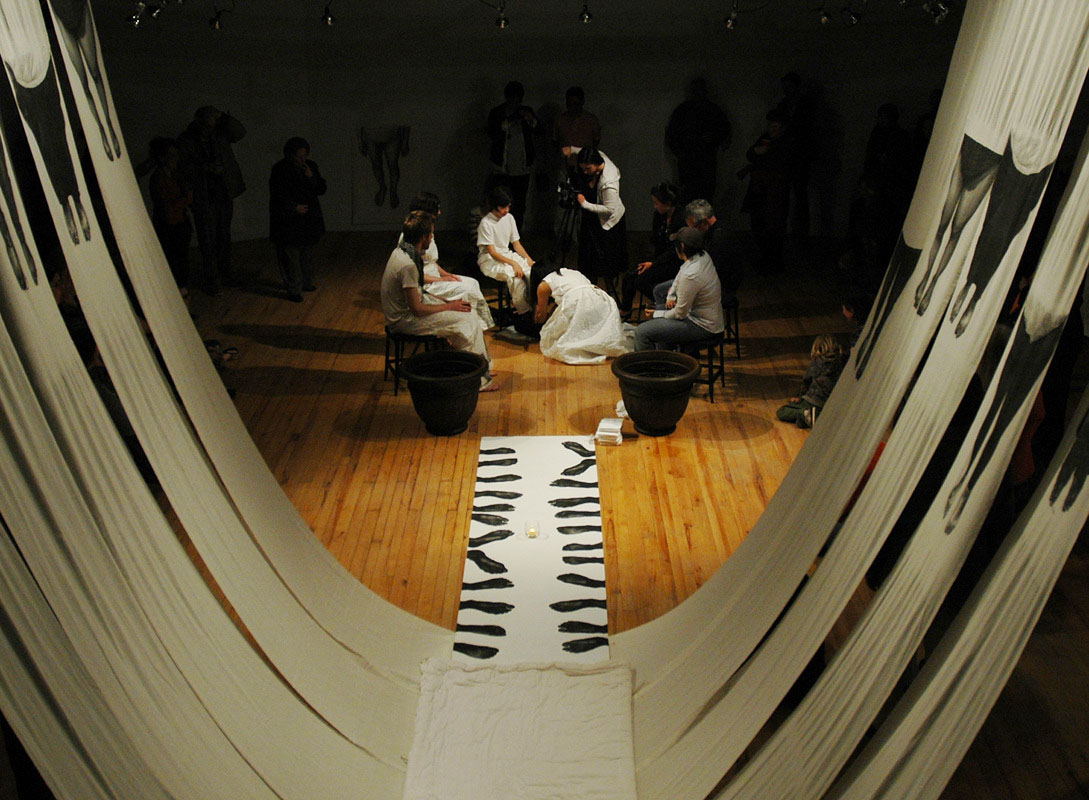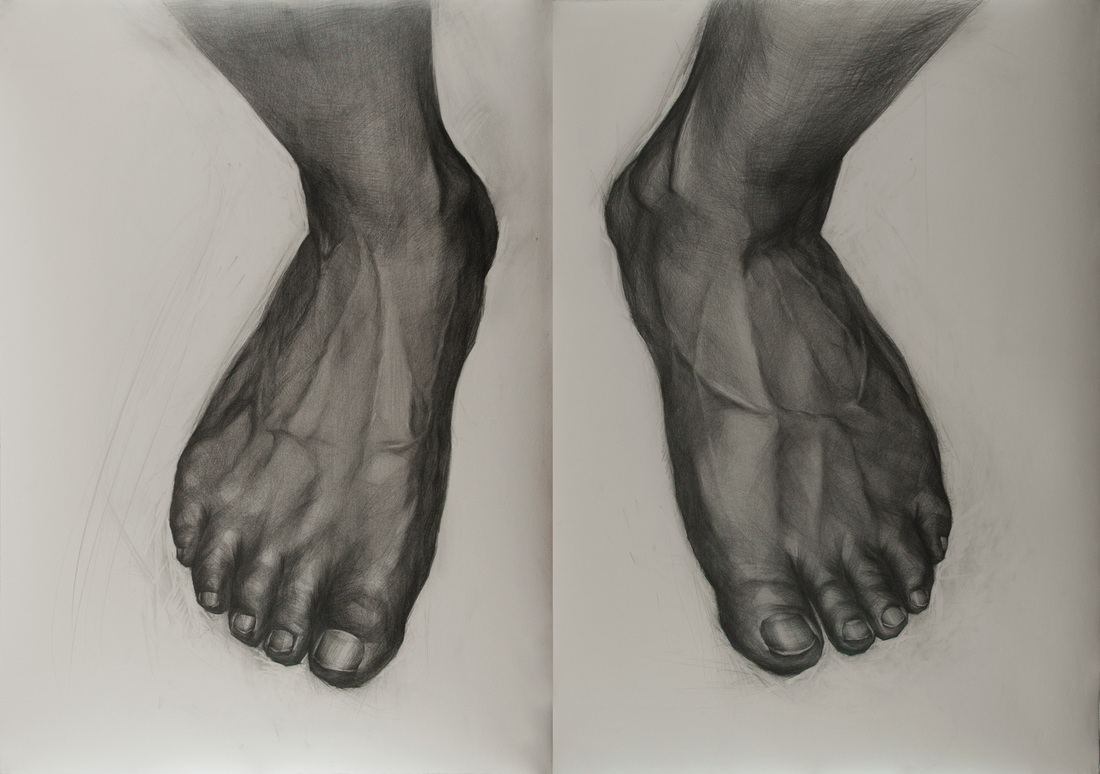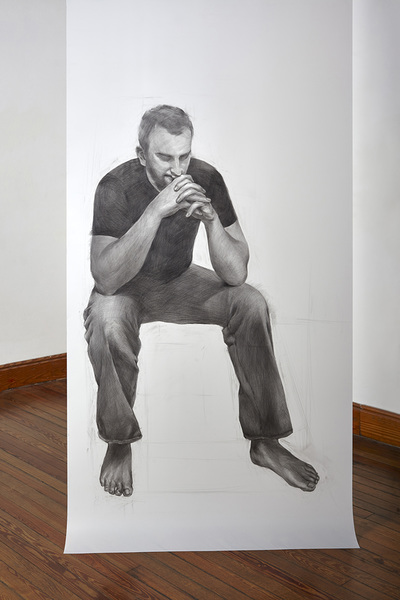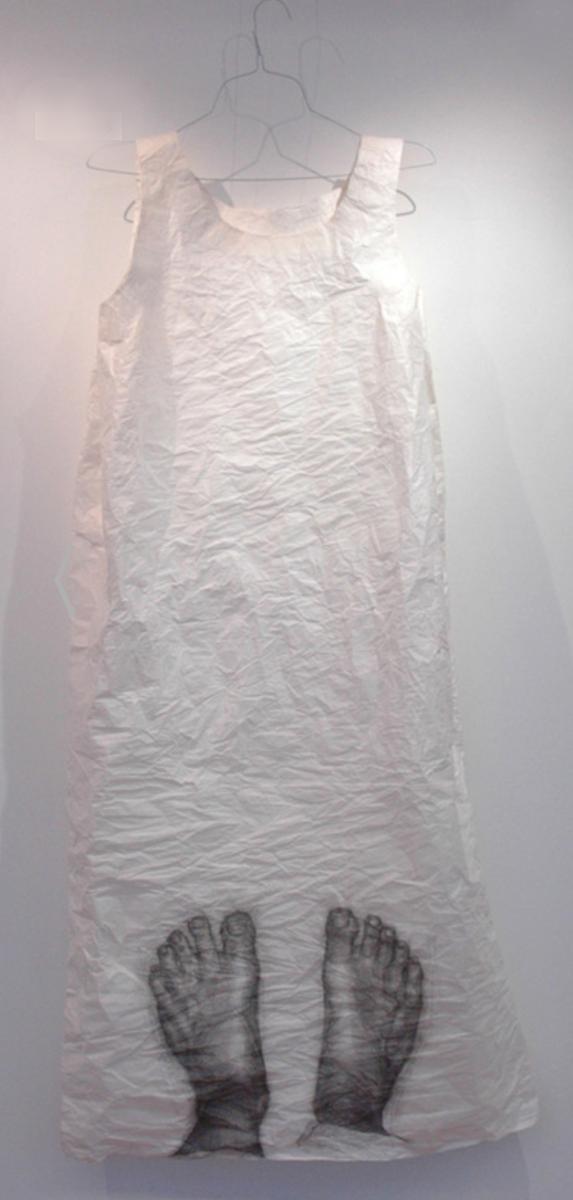March 21: “Love One Another”
♫ Music:
WEEK SIX INTRODUCTION
TITLE: CHRIST’S FAREWELL DISCOURSE & HIGH PRIESTLY PRAYER
March 21 - March 27
Leaders in the Greco-Roman world commonly offered final words or farewell addresses near the end of their lives. This practice has continued throughout history. It is interesting to note that the Old Testament contains a number of final verbal testaments offered by patriarchs and kings -- Jacob blessing his sons (Genesis 49); Joshua's farewell to Israel’s leaders (Joshua 23-24); and David's concluding instructions to Solomon (1 Chronicles 28-29). Christ’s modus operandi of teaching as recorded in the Synoptic Gospels was through the parable (“an earthly story with a heavenly meaning”), but in the Gospel of John, Christ taught through discourse, especially in the second part of the gospel.
This week as we look specifically in the Gospel of John at Chapters 13-17, let’s be mindful of those things that were of utmost importance for Christ to relay to his followers near the end of his earthly sojourn. This “Book of Glory” as these chapters are sometimes called, contain farewell discourses that describe the new commandment to love; Christ as the only way to God; the promised coming of the Holy Spirit; Christ’s return to the Father in Heaven; Christ as the True Vine; and finally Christ’s High Priestly Prayer.
Singer/songwriter Michael Card says that three words dominate this portion of Scripture. These words are: remain, love, and glory. Card writes, “What seems especially heavy on Jesus’ heart and mind is that his disciples do not stray, wander, or abandon his teachings. That is, he wants them to remain, to stay, to abide, and resist the temptation to stray. And the glue that will hold them to his Word and to each other is love.” In John 17, Christ prays for himself, his disciples, and finally for all believers that he and they might be glorified. Jesus asks the Father that all who believe in him will share in the glory he shares with God the Father (John 17:22-23).
Day 33 - Sunday, March 21
Title: “LOVE ONE ANOTHER”
Scripture: John 13:12-20;31-37
So when He had washed their feet, and taken His garments and reclined at the table again, He said to them, “Do you know what I have done to you? You call Me Teacher and Lord; and you are right, for so I am. If I then, the Lord and the Teacher, washed your feet, you also ought to wash one another’s feet. For I gave you an example that you also should do as I did to you. Truly, truly, I say to you, a slave is not greater than his master, nor is one who is sent greater than the one who sent him. If you know these things, you are blessed if you do them. I do not speak of all of you. I know the ones I have chosen; but it is that the Scripture may be fulfilled, ‘He who eats My bread has lifted up his heel against Me.’ From now on I am telling you before it comes to pass, so that when it does occur, you may believe that I am He. Truly, truly, I say to you, he who receives whomever I send receives Me; and he who receives Me receives Him who sent Me. Now is the Son of Man glorified, and God is glorified in Him; if God is glorified in Him, God will also glorify Him in Himself, and will glorify Him immediately. Little children, I am with you a little while longer. You will seek Me; and as I said to the Jews, now I also say to you, ‘Where I am going, you cannot come.’ A new commandment I give to you, that you love one another, even as I have loved you, that you also love one another. By this all men will know that you are My disciples, if you have love for one another.”
Poetry
True Love
by Kathleen Norris
binds all wounds,
wounds all heels,
whatever. You can tell.
William Buckley,
Gore Vidal, Sampson
and Delilah, Paul
and the Corinthians.
You can tell.
It makes us fight
and bleed, takes us to the heights,
the deeps, where we don't
want to go. Adam and Eve. Noah
and Mrs., David,
Bathsheba, Ruth,
Naomi. You can tell.
The way light surges
out of nothing. The Magdalene,
the gardener. God help us,
we are God's chosen now.
A TOUCH OF LOVE
When Jesus stoops to wash his disciples’ feet, he performs the most menial task reserved for the lowliest servant. This humility is so profound and socially inappropriate that Peter protests: you will never wash my feet! Peter’s surprise underscores Jesus’ command to humbly serve one another, but in the aftermath of washed and dried feet, Jesus adds, “love each other as I have loved you.” How has he loved us? The answer lies within the foot washing.
In her 2010 exhibition “We Are,” Hyeyoung-Shin created a series of drawings and lithographs of life-sized legs and feet which framed an intimate, performative foot washing. Enacted by Shin herself, she recounts how she and the participants shared their “scents, heartbeats, touches, and space,” resulting in mutual empathy. Notice the closeness and shared touch in this interaction.
Something we might overlook when considering Jesus washing his disciples’ feet is what physical presence and touch contribute to conveying a particular quality of love. We often think of communicating and receiving knowledge in mental, cranial terms. But our multi-sensory, embodied experience plays a role both in how we communicate and come to “know.” We can learn about love by viewing a foot washing, but it is quite another kind of learning to have our feet washed. Through the nearness and touch of the foot washing, Jesus conveys a quality of love which cannot be mediated any other way.
Touch is sometimes overlooked, but it is powerful. Skin is the most direct organ of touch, communicating in reciprocal fashion. Touch expresses foundational empathy; infants die without nurturing touch. Touch’s potency leads us to structure its practice, dictating propriety around who can touch whom and in what way(s).
Our society’s rules around touch surfaced this past year with COVID19. Overnight we observed a rule-reversal. Practices considered to convey kindness—a handshake, a hug—were suddenly deemed dangerous. What we once considered rude—maintaining “social” distance—became an important way to show love of neighbor. The pandemic has demonstrated the general principle that well-intended touch can convey love. We have witnessed this most acutely (and tragically) in the absence of loved ones. Zoom, while useful, is an insufficient proxy in the COVID patient’s most critical hour of suffering. In such moments, a nurse’s presence and touch loves the sick through their deepest valley.
When Jesus washed his disciples’ feet, he initiated his own rule-reversal around touch. What Peter considered inappropriate Jesus declared the new way to love. Jesus’ humble touch signified his heart turned outward through his hands, inviting disciples to receive this love into their hearts. As we consider the magnitude of love Jesus’ foot washing represents, poet Kathleen Norris captures the world-changing impact of “true love.” As love takes us to heights and depths where we sometimes don’t want to go, we are reminded that Jesus has gone there first. His touch conveys love to his disciples, saying, “you are here to me.” May this love fuel us to “say” the same to each other.
Prayer
Jesus, Word made flesh, washer of feet.
In love you have drawn so close to us.
Your humble grasp of your followers’ feet prefigures your humble, glorious death on our behalf. We are so grateful.
Would you lead us to “grasp” more fully this up-close kind of love you have for us?
And then, would you lead us to love all those we encounter in the same way?
Be near, Lord Jesus, we need you this day.
Amen.
Jeannine Hanger, Ph.D.
Adjunct Professor
Talbot School of Theology
Biola University
For more information about the artwork, music, and poetry selected for this day, we have provided resources under the “About” tab located next to the “Devotional” tab.
About the Artwork:
We Are (Installation view)
Hyeyoung Shin
2010
Performance, drawing, paper garments, lithographs on muslin
University of Buffalo, New York
In her multimedia exhibition and performance entitled We Are, artist Hyeyoung Shin explores the complex relationships that exist between memory, personal experience, and spatial relationships. The exhibition consists of drawings of life-sized human feet paired with a foot washing performance. The installation features thirty-four graphite drawings on paper and on paper garments that Shin specially fashioned for the performance. She also made lithographs of the lower extremities on ten-yard long muslin panels to create a structural component that anchors the installation. Shin’s work speaks about human vulnerability, humility, intimacy, empathy, interpersonal relationships, and a sense of belonging where we are able to define ourselves as unique valued individuals.
https://www.hyeyoung-shin.com/we-are.html
About the Artist:
Hyeyoung Shin is the Assistant Professor of Print Media in the Department of Art & Art History at the University of Missouri-Kansas City. Shin received a M.F.A. from the University at Buffalo , and two B.F.A. degrees in printmaking and painting from Hong-Ik University and Kyoung-Sung University in Korea. Shin exhibited across the US, including solo shows at the Fine Art Gallery in the San Francisco State University, CA; UB Anderson Gallery in the University at Buffalo, NY; the 20|20 Gallery of the Robert Blackburn Printmaking Workshop in the Elizabeth Arts Foundation, New York City, NY; Big Orbit Gallery, Buffalo, NY; Western New York Book Arts Center, Buffalo, NY, and has been featured in many group shows, both nationally and internationally.
https://www.hyeyoung-shin.com/press.html
https://studiosinc.org/hye-young-shin
About the Music:
“Maundy Thursday: Washer of Feet” from the album Lent
Lyrics:
Let us praise Jesus, the Washer of Feet;
Jesus, the Lordly who gave up his Seat;
Jesus, the Maker of all that there is;
Jesus, the Servant to all who are his.
We praise Jesus
We praise Jesus
Let us praise Jesus, the Blesser of Bread;
Jesus, the Off’ring who suffered and bled;
Jesus, the Royal who knelt in the dust;
Jesus, the Priest in whose Blessing we trust.
Let us praise Jesus, the Shepherd alone;
Jesus, the Lover who gathers His own;
Jesus, the Wounded who died for us all;
Jesus, the Christ on whose goodness we call.
Let us praise Jesus, the Savior adored;
Jesus, the Sonnet of praise to our Lord;
Jesus, the Gracious whose own life He gave;
Jesus, the Lowly who came down to save.
We praise Jesus
We praise Jesus
We praise Jesus
We praise Jesus
About the Lyricists/Composers:
Matthew Macaulay, Nelson Koscheski, and Ryan Flanigan
Matthew Macaulay (b. 1984) is a British Christian musician and worship leader, who primarily plays a contemporary worship style of Christian music. He has released two studio albums, As for Me (2008) and Life Light (2012). His music ministering education was done during a two-year stint with the Hillsong Church in Sydney, Australia, before he settled back in Watford, Hertfordshire, at Soul Survivor. He is now a worship leader at St. Andrew Church. Macaulay’s music recording career began in 2008 with the studio album, As for Me. His subsequent studio album, Life Light, was released from Mustard Productions in 2012.
https://en.wikipedia.org/wiki/Matthew_MacaulayMusic career
Nelson Koscheski (1941–2019) was a poet and priest in the Anglican Church of North America. A lifelong Texan, Nelson’s collaboration with songwriter and worship leader Ryan Flanigan began in 2015 when one of his religious poems was set to an original folk tune by Flanigan. Nelson’s poetry is saturated in his life experiences, West Texas imagination, and lifestyle of contemplative prayer. His poetry takes the listener through some of the darkest places of human despair into the presence of goodness, truth, and beauty.
https://www.liturgicalfolk.com/about
Ryan Flanigan (b. 1979) is a songwriter and the church music director at All Saints Church in Dallas, Texas. A curator of new songs for the growing liturgical renewal movement in America, Ryan works to create beautiful sacred music. He believes the church can be a credible artistic witness of God’s goodness, truth, and beauty to the whole world. Ryan’s melodies are accessible and rooted in the inherently joyful sounds of the American folk tradition.
https://www.liturgicalfolk.com/about
About the Performers:
Liturgical Folk began as a music project centering around Nelson Koscheski’s religious poems set to Ryan Flanigan’s folk tunes. Since writing their first hymn in early 2015, Liturgical Folk has gained the support of producer Isaac Wardell, who has worked with many spiritually minded songwriters, including Sufjan Stevens, Sandra McCracken, and Josh Garrels. The hymns range from mournful lamentations to spirited carols. Most wrestle with substantial themes such as sorrow and hope. The collaboration of Flanigan and Koscheski is also a unique cross-generational pairing of two men united by a belief that when music is honest and refined it can be a credible, positive witness for the church.
https://www.liturgicalfolk.com/about
About the Poet:
Kathleen Norris (b. 1947) is a best-selling poet and essayist. After graduating from Bennington College in Vermont in 1969, Norris became an arts administrator for the Academy of American Poets and published her first book of poetry two years later. She is the author of the New York Times bestsellers The Cloister Walk, Dakota: A Spiritual Geography; Amazing Grace: A Vocabulary of Faith; and The Virgin of Bennington. Exploring the spiritual life, her work is at once intimate and historical; rich in poetry and meditations; brimming with exasperation and reverence; deeply grounded in both nature and spirit; sometimes funny and often provocative.
https://en.wikipedia.org/wiki/Kathleen_Norris_(poet)
https://www.poetryfoundation.org/poets/kathleen-norris
About the Devotion Author:
Jeannine Hanger, Ph.D.
Adjunct Professor
Talbot School of Theology
Biola University
Dr. Hanger recently completed a Ph.D. in New Testament Studies from the University of Aberdeen. She has served as an Adjunct Professor in Biblical & Theological Studies at Biola since 2009. Her teaching and writing activities seek to inspire others in their own pursuit of God through the Word. She is married to Garrick, a pastor in the South Bay. They are currently enjoying a new season of ministry in their launch of Coastline Covenant Church alongside good friends. They live together with their three teens in Torrance, CA.






